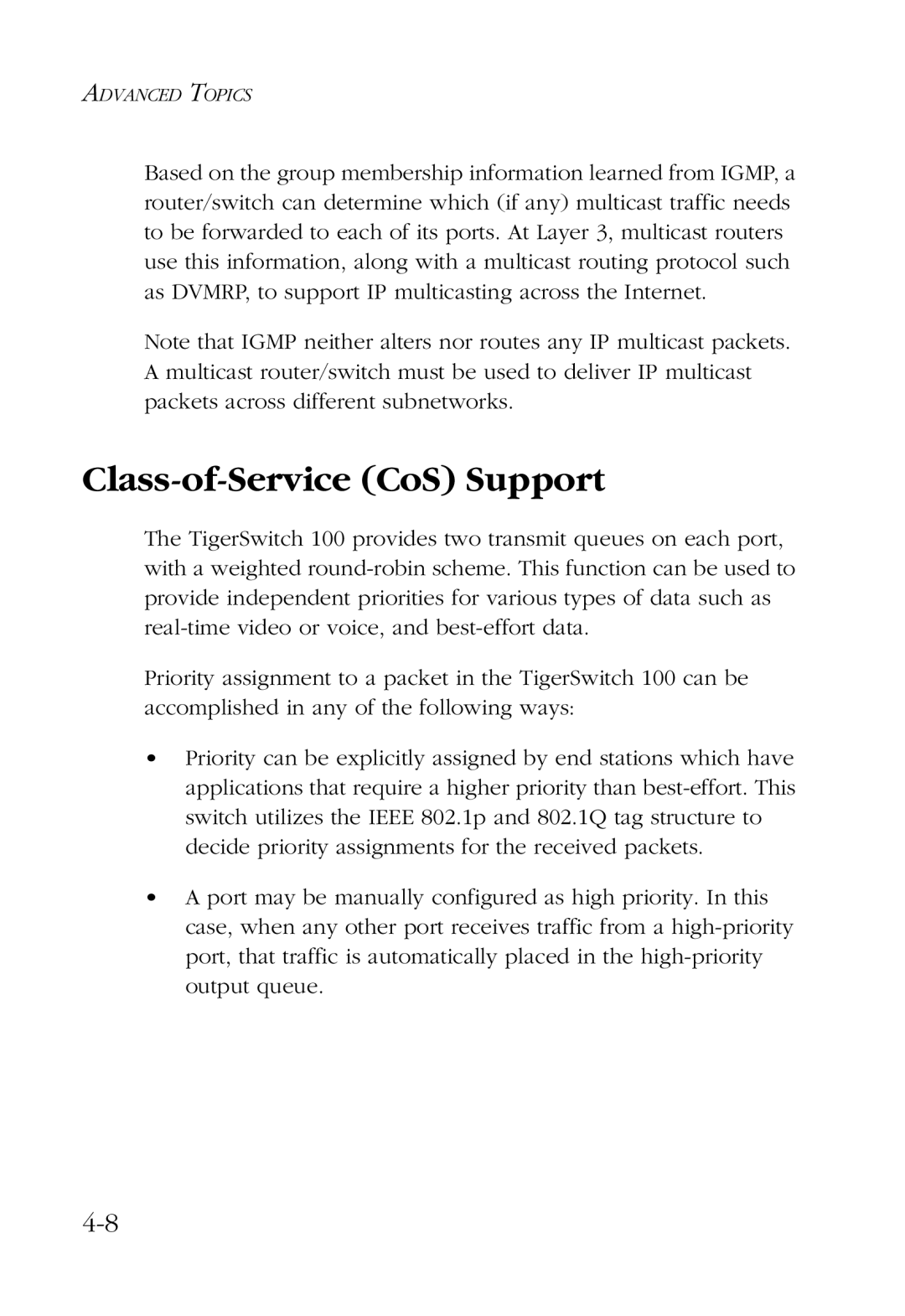ADVANCED TOPICS
Based on the group membership information learned from IGMP, a router/switch can determine which (if any) multicast traffic needs to be forwarded to each of its ports. At Layer 3, multicast routers use this information, along with a multicast routing protocol such as DVMRP, to support IP multicasting across the Internet.
Note that IGMP neither alters nor routes any IP multicast packets. A multicast router/switch must be used to deliver IP multicast packets across different subnetworks.
Class-of-Service (CoS) Support
The TigerSwitch 100 provides two transmit queues on each port, with a weighted
Priority assignment to a packet in the TigerSwitch 100 can be accomplished in any of the following ways:
•Priority can be explicitly assigned by end stations which have applications that require a higher priority than
•A port may be manually configured as high priority. In this case, when any other port receives traffic from a
